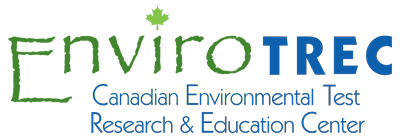Digitalization continues to drive massive levels of change in factories, where automation and computerized control systems abound. Integrating the multitude of legacy – and often proprietary – systems that were not designed to communicate across production lines is a challenge being faced by Industry 4.0. As a result, constraints are found due to the lack of standards.
To make the most of this digital revolution, to harness the full power of Industry 4.0, and to capitalize on the potential savings that automation will bring, companies need to join Industrial Internet of Things (IIOT): platforms and operating systems across multiple production lines and subsystems.[i]
The core idea of interoperability is integration, which is also the key point of IIoT and Cyber-Physical Systems (CPS). There are three types of integration of Industry 4.0, horizontal integration, end-to-end integration, and vertical integration. These three types of integration represent three dimensions as follows:
- peer to peer horizontal integration over the business value networks, (defined as machine-to-machine communications)
2) the vertical integration through the manufacturing system, (defined as combining the sensor data to the business decision support system); and
3) end-to-end integration across the product chain, (includes the final component necessary for interoperability, the human interface with the business decision system.
As no single company can dictate that all its partners use the same software, standards for how the information is represented becomes critical for error-free transmission and translation. The terms interoperability and integration are frequently used to refer to this error-free transmission and translation.
Figure 1: Industry 4.0 connects the entire factory to itself

Source: Make your OI, IT, IIoT Protocol Interoperability Easier for Industry 4.0
The following figure demonstrates some salient features of Interoperability. The traditional “automation pyramid” for manufacturing control is positioned on the left. Integration problems quickly arise in the intra-enterprise hierarchical structures that contain Enterprise Resource Planning (ERP)–Manufacturing Execution Systems (MES) situated on the shop-floor.
Smart manufacturing calls for the integration of diverse and distributed cloud-based services, enterprises, smart factories, smart devices, and processes. The required integration of these systems in turn calls for a seamless exchange of information between these heterogeneous systems which operate under a wide variety of communication standards. This phenomenon has introduced an unprecedented challenge known as interoperability.
Figure 2: A transitional diagram demonstrating how the traditional view of manufacturing Is evolving to the interoperability state

Source: Interoperability in Smart Manufacturing: Research Challenges
EnviroTREC’s role in Interoperability – Industry 4.0
Our role in CPS is to support local development, particularly as focused on the aerospace industry. EnviroTREC is also a member of the Manitoba Aerospace Research and Technology Committee, the Manitoba HPC consortium as well as other industry round-tables.
Activities Related to Cyber – Interoperability
- University of Manitoba: Mechanical Engineering
- Red River College, Smart Factory
- MITT, Cyber Defence and Cloud Administration Diploma
For Further Reading:
- Interoperability of the Time of Industry 4.0 and the Internet of Things: download article
- Interoperability and Security Challenges of Industrie 4.0: download article
- The Role of Interoperability in The Fourth Industrial Revolution Era: download article
[i] Meering, C. (July 5, 2018). Interoperability is the key to boosting Industry 4.0. Retrieved from https://internetofthingsagenda.techtarget.com/blog/IoT-Agenda/Interoperability-is-key-to-boosting-Industry-40
